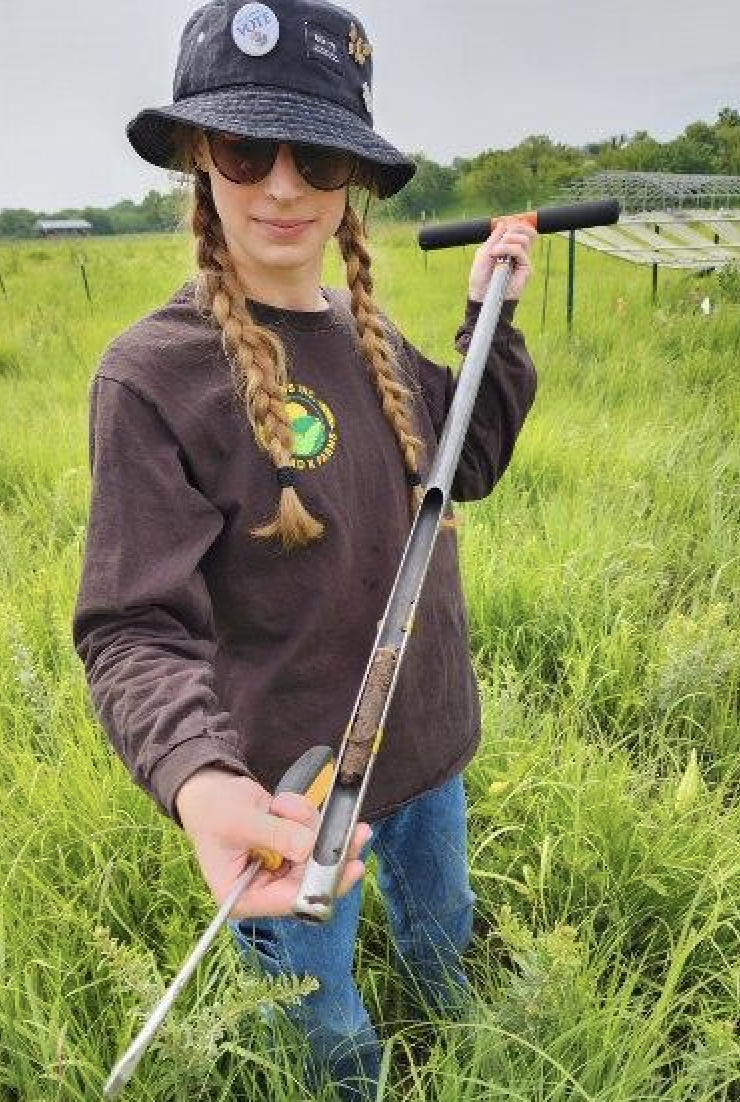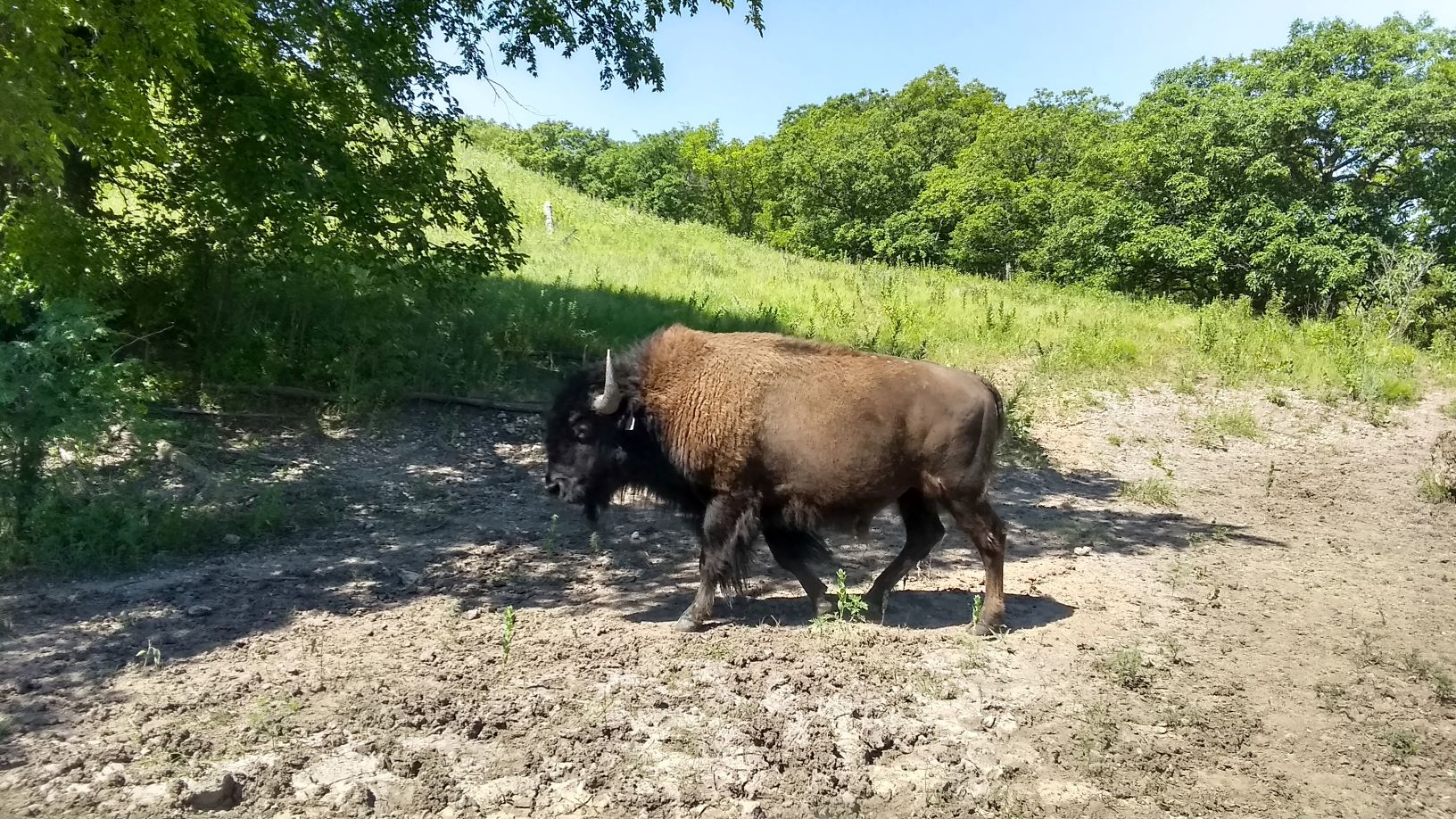2023 Konza LTER Summer REUs
Participant: Marlowe Kastens
Institution: University of Kansas (senior in Biology and Environmental Studies)
Advisor: Dr. Sara Baer (University of Kansas)
 Over the summer, I worked at Konza to study how restored prairies respond to drought and nutrient conditions that impact soil properties, and how those influence soil microbial communities. With the help of Baer lab members, I collected soil samples from the nutrient heterogeneity plots within the PRP system. The imposed treatments include nitrogen enrichment and reduction, as well as reduced precipitation through rainout shelters. In the lab, I learned how to perform soil tests on my samples to determine gravimetric water content, pH, and soil organic matter. After the data collection, I gained experience with RStudio to display my results and I also learned more about statistical analysis.
Over the summer, I worked at Konza to study how restored prairies respond to drought and nutrient conditions that impact soil properties, and how those influence soil microbial communities. With the help of Baer lab members, I collected soil samples from the nutrient heterogeneity plots within the PRP system. The imposed treatments include nitrogen enrichment and reduction, as well as reduced precipitation through rainout shelters. In the lab, I learned how to perform soil tests on my samples to determine gravimetric water content, pH, and soil organic matter. After the data collection, I gained experience with RStudio to display my results and I also learned more about statistical analysis.
In addition to the lab tests, I sent soil samples to the University of Missouri Soil Health Assessment Center for phospholipid fatty acid biomarker analysis. The results have not come back yet, but that data will eventually help quantify fungal and bacterial biomass. I would like to analyze the relationship between soil microbial composition and soil properties like pH and percent organic matter. Once I have all of the results, I am hoping to further the knowledge on how soil microbial communities respond to different nutrient and precipitation levels, which is increasingly important with our changing climate and nutrient inputs.
I greatly appreciate the opportunity to research at Konza Prairie, and I hope to do more work with prairie restoration. This experience taught me about field and lab skills that will be useful in my future studies. Thank you to Dr. Sara Baer and PhD student Ashley Wojciechowski for guiding me through the research process.
Participant: Audrey Van Zelfden
Institution: Emporia State University (senior in Biology)
Advisor: Zak Ratajczak (Kansas State University)
When I first laid eyes on Konza several years ago it was amazing but I had no idea that I would be back doing research there! This last summer I had the opportunity to research the water holding abilities of bison wallows at Konza Prairie LTER. My goal was to find what properties about these wallows allows them to hold water. I randomly selected 148 wallows that I regularly visited, checking for water coverage and soil moisture. During my fieldwork I examined certain properties of the wallows such as area, depth of the wallow, soil texture, cations in the soil, and different aspects of topography. I also quantified the plant cover of wetland and non wetland plants in the wallows and measured depth to refusal, which measured how far a rebar could go into the ground before it hit rock or could not go in any farther.
From finding cool reptiles, seeing the variety of plant species, and being surprised by the bison, each day was something to look forward to! Something I really enjoyed about my research was continuing similar work with bison wallows and applying skills from courses I have taken in college. To be able to use what I have learned helped me understand how to do research so much better. During my time as an REU student I also learned new skills with GIS, got some crash courses in Program R to make models and look at statistics, and learned how to make my own datasheets.
Overall, the results of this study show that there is no single predictor variable as to why some bison wallows hold water for longer periods of time than others. Many of the variables were not explanatory of water holding properties themselves but we can be sure that they do have an effect on our predictor variable (water holding days, soil moisture). What surprised me the most about this research project was how different each wallow is and how many of the variables had some effect on its ability to hold water, even ones I thought may not have as much of an effect! Even though I have not figured out why some wallows hold water and others do not, I am still reviewing the data in different ways to see if there is a combination of multiple variables affecting that. At best wallows are very complex, with there being no simple solution to this question at the moment.
I can confidently say that my REU experience has increased my interest in doing future research and having done the process has helped me understand how to ask questions to which the answers are unknown. Lastly, I would like to thank my advisor Dr. Zak Ratajczak for his guidance through this project and I would like to thank the rest of the Resilience Lab members for helping me with data collection-couldn’t have done it without their help!

